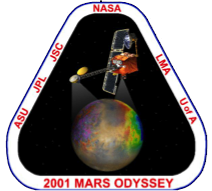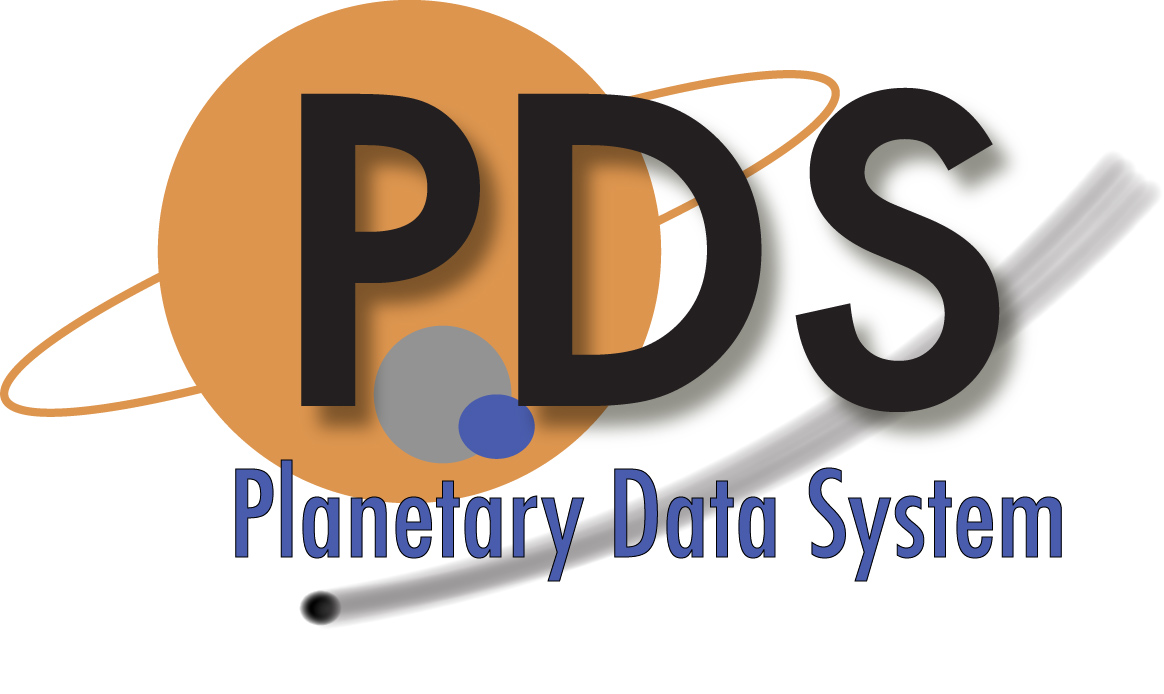
Oct 31, 2001 Ls 262.7 MY 25 to Jan 11, 2002 306.9 MY 25
Examples of the ODY Aerobraking PROFILE (left figure) and ALTITUDE (right figure) data of atmospheric density and scale height derived from measured spacecraft deceleration during an aerobraking drag pass.. Data from the spacecraft accelerometers was used to derive the spacecraft deceleration during each pass.
Useful Mission Documents
Description of the DATA
For each drag pass (spanning orbits 10 - 336 of the mission) there is an individual ASCII PROFILE file containing derived density values at 1-second intervals for a time period spanning several hundred seconds centered upon the periapse time. There is also a separate ASCII ALTITUDE file which provides derived density and scale height values at specified altitudes (100 km, 110 km, etc.) for both the inbound and outbound portions of the orbit/drag pass as well as at the periapsis altitude, and 1.26 nanobar pressure level during both the inbound and outbound portions of the orbit/drag pass
The data contained within the ODY AEROBRAKING PDS archive odya_0001 are provided in either the ALTITUDE or PROFILE folders within the DATA folder. Within both the PROFILE and ALTITUDE folders a user will find subfolders containing ~100 drag passes of data, with each drag pass consisting of a single ASCII file. For instance, the data presented in the left figure above are from the L2P120.TAB file located within the P100_199 folder within the PROFILE folder, while the data presented in the right-side figure above are located in the L3P120.TAB file located in the P100_199 folder located within the ALTITUDE folder. RAW MRO accelerometer data are also available within their own folder below the DATA folder. The contents and structure of the TAB files are described within text within those data file.
Retrieving the data volume
Raw Data
Calibrated Data
Note:
Very similar derived spacecraft aerobraking data, with archive structures very similar to this Odyssey aerobraking archive, are also available from the MGS and MRO mission archives
Useful Mission Documents
Description of data volume
Mission Description
Spacecraft Description
Instrument Description
Guide to Accelerometer products
Calibration Data
References
Mission Description
Spacecraft Description
Instrument Description
Guide to Accelerometer products
Calibration Data
References
Description of the DATA
For each drag pass (spanning orbits 10 - 336 of the mission) there is an individual ASCII PROFILE file containing derived density values at 1-second intervals for a time period spanning several hundred seconds centered upon the periapse time. There is also a separate ASCII ALTITUDE file which provides derived density and scale height values at specified altitudes (100 km, 110 km, etc.) for both the inbound and outbound portions of the orbit/drag pass as well as at the periapsis altitude, and 1.26 nanobar pressure level during both the inbound and outbound portions of the orbit/drag pass
The data contained within the ODY AEROBRAKING PDS archive odya_0001 are provided in either the ALTITUDE or PROFILE folders within the DATA folder. Within both the PROFILE and ALTITUDE folders a user will find subfolders containing ~100 drag passes of data, with each drag pass consisting of a single ASCII file. For instance, the data presented in the left figure above are from the L2P120.TAB file located within the P100_199 folder within the PROFILE folder, while the data presented in the right-side figure above are located in the L3P120.TAB file located in the P100_199 folder located within the ALTITUDE folder. RAW MRO accelerometer data are also available within their own folder below the DATA folder. The contents and structure of the TAB files are described within text within those data file.
Retrieving the data volume
Raw Data
Calibrated Data
Note:
Very similar derived spacecraft aerobraking data, with archive structures very similar to this Odyssey aerobraking archive, are also available from the MGS and MRO mission archives
 PDS: The Planetary Atmospheres Node
PDS: The Planetary Atmospheres Node



